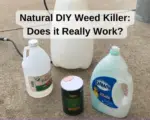Pumps can be costly, so it makes sense to try and use one pump to tackle multiple jobs. If you already have a transfer pump you know that it can be used for many things. If you are like me, you may even be wondering: can a transfer pump be used for a sprayer pump?
A transfer pump can be used as a sprayer pump in many circumstances. There are several factors that will determine whether or not your transfer pump could be used as a sprayer pump and how effective it can be. These factors include the volume and pressure the transfer pump is capable of producing as well as the type of material the mechanical seal is made from.
The best place to start is by clearly defining what a transfer pump is and what factors you need to consider to determine if you can use your transfer pump as a sprayer pump.
What is a Transfer Pump?
Technically any pump could be called a “transfer pump” however transfer pump is a term typically used to describe centrifugal pumps that are intended for transferring fluids from point A to point B. They are designed for high flow, not high pressure. You might hear a transfer pump called a utility pump, trash pump, water pump, etc.
A transfer pump is usually used for liquids like water, fuels, and fertilizer, not for heavy or viscous liquids like motor oil, hydraulic fluid, liquid feeds, etc. Centrifugal pumps don’t handle those heavy liquids efficiently, they usually require positive displacement pumps like gear pumps or diaphragm pumps.
Common Transfer Pump Uses:
- Load and unload storage tanks
- Bulk fuel transfer
- Pump out lakes and lagoons
- Loading sprayer tanks
Self-Priming vs Straight Centrifugal Pumps
There are two basic centrifugal transfer pump types: straight and self-priming. The primary difference between these two pumps is that a self-priming pump keeps liquid in the pump after you initially prime the pump while a straight centrifugal pump requires that there is liquid in the suction line to operate.
There are many factors and variables to all this, however, it is generally the case that a self-priming “suck” liquid from a level below the pump inlet, and a straight centrifugal pump should be used where the liquid level is at the same level or above the pump inlet.
How to Determine If You Can Use Your Transfer Pump as a Sprayer Pump
So how do you know if your transfer pump will work as a sprayer pump? To do this, you need to identify both the output requirements of your sprayer and the output capabilities of your transfer pump.
What are Your Sprayer Requirements?
The type of sprayer that you want to use a transfer pump on is crucial. There are many types of sprayers and they will require a certain type of pump to achieve them. The two things to consider are what is the total volume per minute your sprayer needs and what is the operating pressure your sprayer will require to achieve the results you want.
For those of you wondering if you can use a transfer pump on a tree sprayer, the answer is no. The volume typically produced by a transfer pump is more than adequate, however, a transfer pump will not produce the pressure needed to reach spray heights required for spraying trees much taller than 25 feet in height.
With that out of the way, let’s examine some sprayer types that a transfer pump could be used with.
Ag Sprayer
Ag field sprayers use centrifugal pumps that produce higher pressures than transfer pumps. Where a transfer pump might be able to reach 60 psi, an onboard sprayer pump on large boom sprayers can reach 100+ psi. Usually, sprayer pumps are straight centrifugal and they are hydraulic, PTO, or clutch driven (driven by the engine of the sprayer but engaged by an electric clutch).
You could still use a transfer pump on an ag sprayer, it will have no problem supplying enough flow, but it will be limited in the operating pressure you can achieve. If your spray pressure will be no more than 40 psi, then a transfer pump could work.
If you add up the total flow that will be required for all the nozzles on your sprayer, plus a little cushion for agitation and increased rates, you will know what the gallons per minute demand is of your sprayer. You can then compare this to the output of your transfer pump at 20-40 psi.
One other issue is the power source. Typically transfer pumps are either electric motor-driven or gas-engine driven. On a sprayer electric isn’t really an option other than 12-volt pumps and those have a max flow of about 5 GPM.
You can use an engine-drive transfer pump on a sprayer but keep in mind that a standard recoil start engine won’t allow you to start or stop the pump remotely. An electric start engine will give you some flexibility, you can wire in a remote switch to start/stop the engine.
Lawn & Turf Sprayer
A transfer pump could also be used on a smaller boom or boomless sprayers used for lawns, turf, golf courses, etc. These sprayers will require less flow than their larger ag counterparts, and boom sprayers don’t always require much pressure. A transfer pump may be way too much flow for a smaller sprayer that only needs 10-20 GPM flow.
If a transfer pump that is capable of 200 GPM is only flowing 20 GPM for a long period of time, the pump can get hot and this could cause damage. It is not likely but the best way to avoid this is to install a bypass or recirculation line on the output of the spray. This will allow any extra flow not needed to supply the boom, to return to the tank before it has the chance to heat up.
Of course, this all depends on the output of your sprayer, which is determined by your application rate. The rate you want to apply and the nozzle type you use will determine what pressure you need to spray at. If you are uncertain about choosing a nozzle size, you can view the article I wrote that explains how to choose the correct nozzle for a boom sprayer.
Skid Sprayers
A skid sprayer is no different, you must know the flow rate and pressure requirements of your skid sprayer in order to determine if your transfer pump will be adequate. Transfer pumps can usually supply plenty of flow for skid sprayers used for fire fighting, watering, de-ice spraying, dust control, and fertilizer application.
What Are The Capabilities of Your Transfer Pump?
Transfer pumps vary widely in their performance. They also vary in terms of the horsepower required to operate them.
To know the flow of your pump you can refer to the manufacturer-provided pump curve. This curve will tell you the capabilities of the pump in terms of flow rate at different head pressures. This can usually be found in the operator’s manual, but sometimes it just isn’t available.
If the pump curve is not available, you can follow these general guidelines for a 2-inch or 3-inch transfer pump. Just keep in mind that these are approximate and will vary for different pumps. Plumbing, fluid type, and pumping conditions will play a factor.
These are the approximate expected flowrates for transferring water:
- 2-inch pump with 5 hp engine: 150 GPM at 20 psi and 100 GPM at 40 psi.
- 3-inch pump with 8hp engine: 225 GPM at 10 psi and 170 GPM at 20 psi.
As you can see, in many cases, these pumps will provide adequate flow if your sprayer will only require 20-40 psi to perform effectively.
Related:
Bottom Line: Can You Use a Transfer Pump as a Sprayer Pump?
A transfer pump can be used as a sprayer pump in some scenarios. A typical gas-engine drive centrifugal pump could provide the flow and pressure needed for boom sprayers and skid sprayers that won’t require a pressure of more than 30 or 40 psi.
When possible use a pump that is designed for your specific use, but in a pinch, you may be able to make a transfer pump work.
Read More:
- DIY Natural Home Weed Killer: Does It Actually Work?I keep seeing people claiming that this simple, homemade weed-killer recipe can kill weeds fast using everyday items from your kitchen. I thought it seemed too good to be true
- 3 Mistakes You Are Making with Your Lawn and Garden SprayerLawn and garden sprayers are essential tools for maintaining healthy lawns and gardens. While these tools are pretty simple in design, they require proper usage to maximize their effectiveness and
- Avoiding Potentially Harmful Chemicals: Effective Pest Control AlternativesGardening is a rewarding hobby. Growing your own food is good for you physically and mentally. Dealing with weeds, insects, and other pests – not so much. Chemical solutions are





